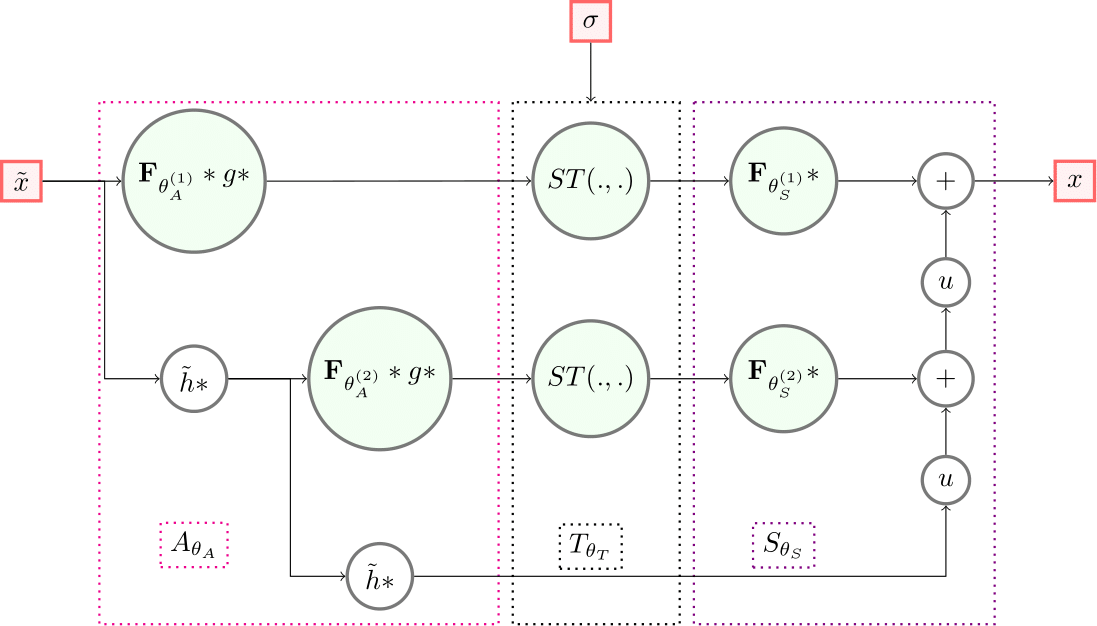 Sparsity based methods, such as wavelets, have been state-of-the-art for more than 20 years for inverse problems before being overtaken by neural networks.
Sparsity based methods, such as wavelets, have been state-of-the-art for more than 20 years for inverse problems before being overtaken by neural networks.
In particular, U-nets have proven to be extremely effective.
Their main ingredients are a highly non-linear processing, a massive learning made possible by the flourishing of optimization algorithms with the power of computers (GPU) and the use of large available data sets for training.
While the many stages of non-linearity are intrinsic to deep learning, the usage of learning with training data could also be exploited by sparsity based approaches.
The aim of our study is to push the limits of sparsity with learning, and comparing the results with U-nets.
We present a new network architecture, which conserves the properties of sparsity based methods such as exact reconstruction and good generalization properties, while fostering the power of neural networks for learning and fast calculation.
We evaluate the model on image denoising tasks and show it is competitive with learning-based models.
Reference: Z. Ramzi, J.-L. Starck and P. Ciuciu. “Wavelets in the Deep Learning Era”, Eusipco, 2020.

